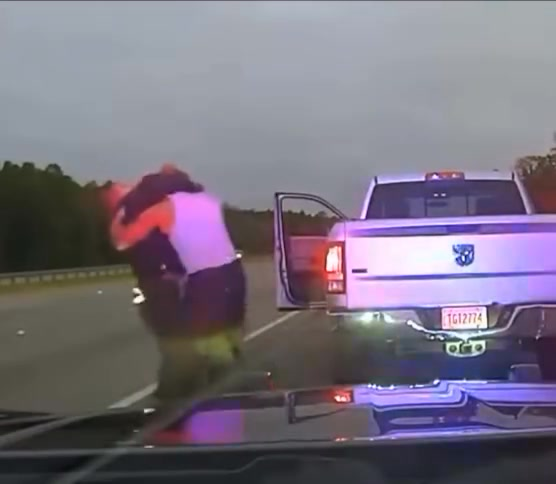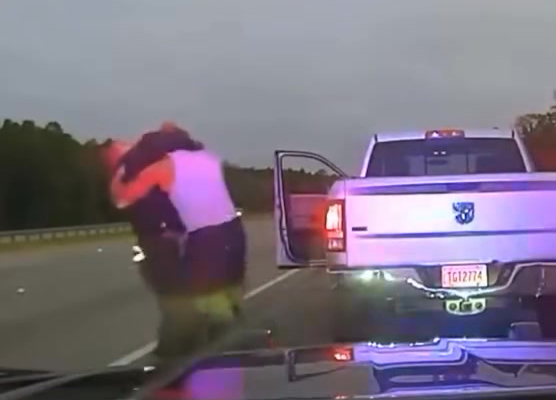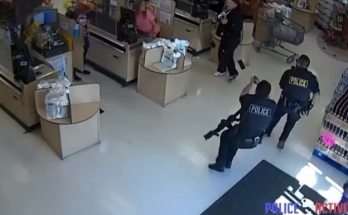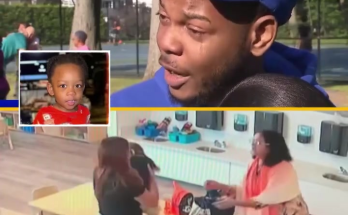MIAMI — Officials in Camden County, Georgia on Wednesday released dash cam video that captured the encounter between Leonard Cure and a sheriff’s deputy in the moments before he was fatally shot during the traffic stop.
Video shows Leonard Cure exiting his pickup before he was fatally shot by a Camden County sheriff’s deputy.
Cure, 53, was stopped on Monday along Interstate 95 just north of the Florida line after sheriff’s officials said his pickup was spotted speeding over 90 miles per hour.
The man had been released from a Florida prison after being wrongly incarcerated for a drug store arrest in Broward County
Authorities say Cure had been speeding, and faced arrest for reckless driving. Instead of going to jail, he ended up dead.
Surveillance video captured Leonard Cure’s final moments
The graphic video from the Camden County sheriff shows the moments when the deputy left his patrol cruiser and began shouting.
“Step out!” the deputy yells. “Get out! Get out! Put your damn hands back here.”
As Cure, wearing a tank top, exited his pickup, he addressed the deputy: “I ain’t doing (expletive).”
The two exchanged words before Cure went to the back of his truck and put his hands on the back of the pickup before the deputy told him he would tase him for speeding and reckless driving.
The two began scuffling before Cure ends up on the ground and was ultimately shot by the deputy.
The Black man was compliant until he was told he was under arrest, according to a Georgia Bureau of Investigation statement.
Citing preliminary information, the GBI said the deputy tased Cure after he didn’t obey the officer’s commands, Cure assaulted the deputy, and the deputy then used the Taser a second time, along with a baton, before pulling out his gun and shooting him.
Video recorded by the deputy’s body camera and patrol car dash camera will be reviewed along with the officer’s statement and other evidence before the agency sends its findings to prosecutors, said Stacy Carson, the GBI agent leading the shooting investigation.
Civil rights attorney Ben Crump said the family wants to see more video of a live stream they say Cure started when he was initially pulled over.
“We want to see if they, in any way, had reasons to fear for their lives, where they had to use deadly force. The family is not convinced that you’re going to see that,” said Crump.
Leaving the Florida prison system
Leonard Cure tried to make up for the 16 years he lost imprisoned in Florida after being wrongfully convicted of armed robbery in 2004. Since being freed three years ago, he gave inspirational talks to high school students, worked a security job and, in middle age, was considering college after buying a home.
Studies show Black Americans face a disproportionate risk of being wrongfully convicted of crimes or killed by police. The anxiety for people freed after doing time for crimes they didn’t commit can be intense, said Seth Miller, executive director of the Innocence Project of Florida.
Miller, who worked to help Cure win freedom, said he’s seen dozens of exonerated clients grapple with “an overarching fear that at any moment the cops are going to come” and take them back to jail or prison.
“That’s the context that people need to understand when they view any situation like this: You have a perfectly wonderful person who has a wrongful incarceration in their past and how that might contribute,” Miller said. “It is a tragedy all around.”
Cure was pulled over while driving to the home he recently bought outside Atlanta after visiting his ill mother, Miller said. Two weeks earlier, Cure had shared his story with high school students at an Innocence Project event in Georgia.
“Lenny was a good soul, cared about people,” Miller said. “He was getting his life back together.”
Equally stunned were Florida prosecutors who had stayed in touch with Cure since reviewing his case and agreeing he should go free. Cure was the first person exonerated by the Conviction Review Unit of Broward State Attorney Harold F. Pryor.
“The Leonard we knew was a smart, funny and kind person,” Pryor said in a statement. “He had been working a job in security, he was hoping to go to college and wanted to work in broadcast radio production.”
Bruce said Cure was reluctant to exit the vehicle — the deputy asked several times before he complied.
“When he got toward the back of the truck and he was going to be handcuffed, that’s when he turned violent,” Bruce said.
The GBI statement said Cure “assaulted” the deputy after he was shocked with a stun gun. Carson declined to give further details.
“I would say attacked him,” said Bruce. “It was a physical confrontation of violence.”
Authorities did not immediately release the name of the deputy, who was placed on administrative leave. Carson said he is a white man.
Black people in the U.S. have been nearly three times more likely to be killed by law enforcement officers than whites over the past decade, according to the Mapping Police Violence project, which tracks the killings using Justice Department statistics and crowdsourced databases.




